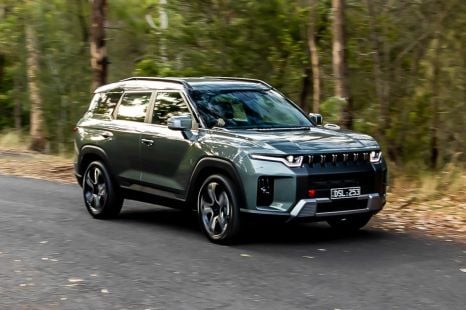

Matt Campbell
2026 KGM Torres Hybrid review
2 Hours Ago
Neil Briscoe gets a first drive of the updated Dacia Duster in Europe ahead of a potential Australian launch in the next 12-18 months.

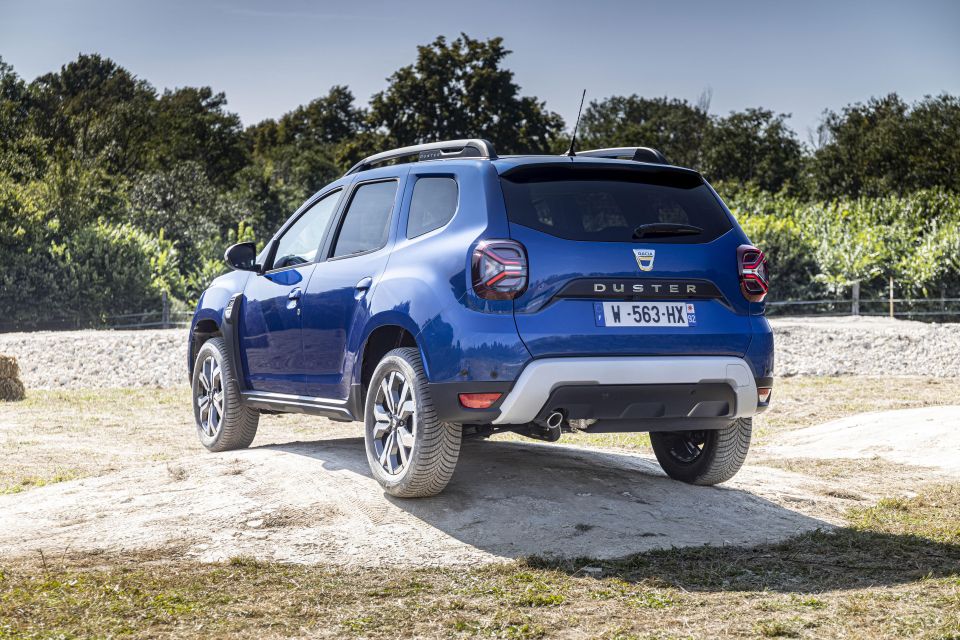

Contributor

Contributor


Contributor

Contributor
Where expert car reviews meet expert car buying – CarExpert gives you trusted advice, personalised service and real savings on your next new car.
The Dacia Duster — a compact family SUV that’s just been given a mid-life facelift — is the core of the Dacia line-up.
It offers space and utility to rival a Nissan Qashqai, but for the same money you’d spend on a Juke, or a Renault Captur.
That’s a compelling offer, especially given the Duster’s increasing sophistication. Will it come to Australia?
Following a stalled plan to bring Dacia down under, those wheels seem to be turning again, so hopefully it won’t be too long before Aussie buyers get the chance to spend surprisingly little cash on one of these.

In European pricing terms, the Duster is priced just below the base price of the Renault Captur – so it would probably, in basic Essential spec, cost around $25,000 if it gets here.
That’s pretty affordable by any metric, given most small SUVs kick off anywhere between $25,000-$30,000 and top out well beyond $40,000.
Key competitors include the rugged Suzuki Jimny (from $26,990) and the Suzuki Vitara (from $27,990 drive-away).
You could also logically cross-shop the Duster with the Nissan Juke (from $27,990) and Renault Captur (from $28,190) should the Dacia make it Down Under.
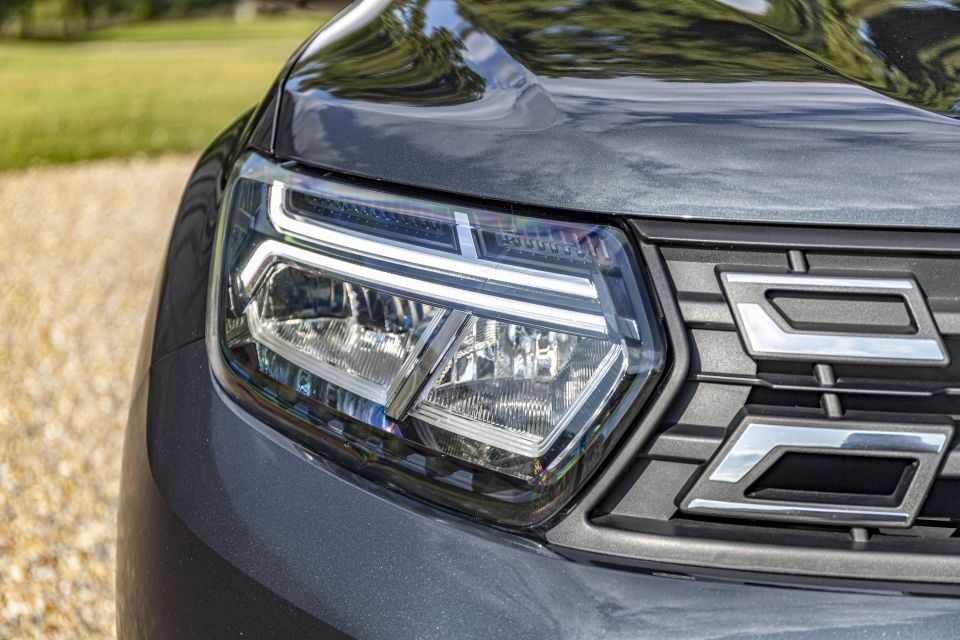
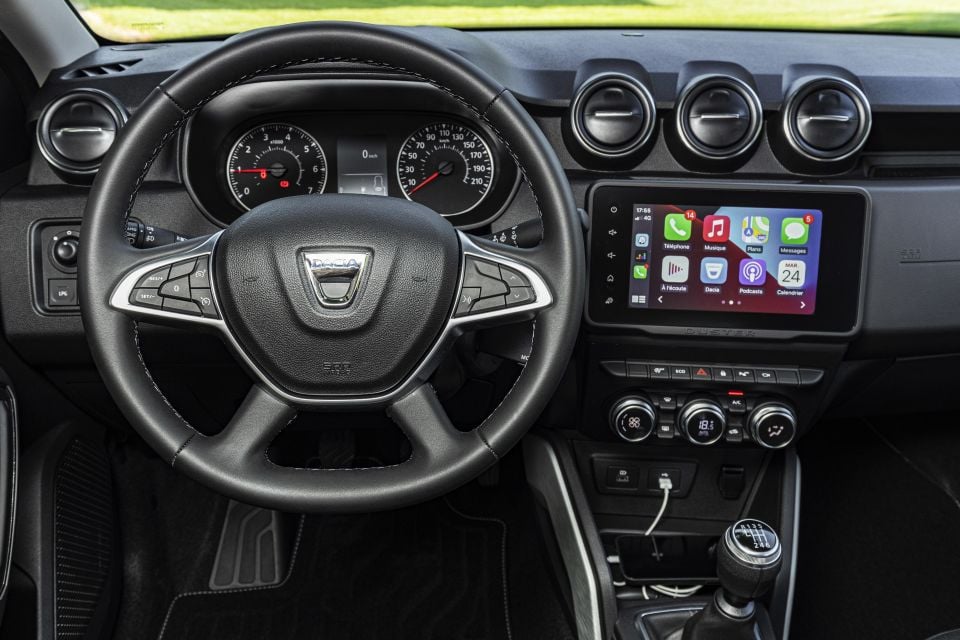
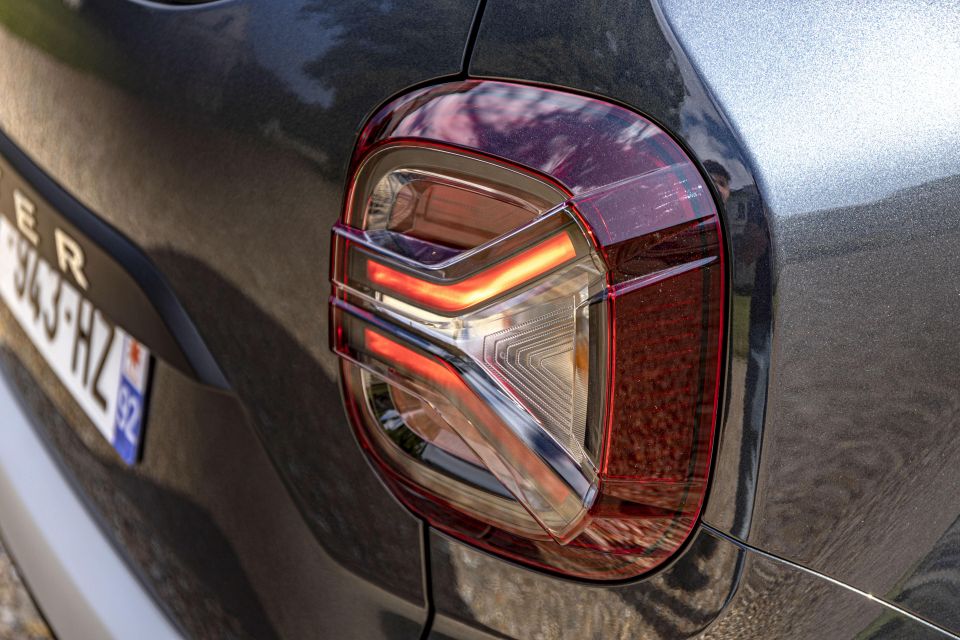
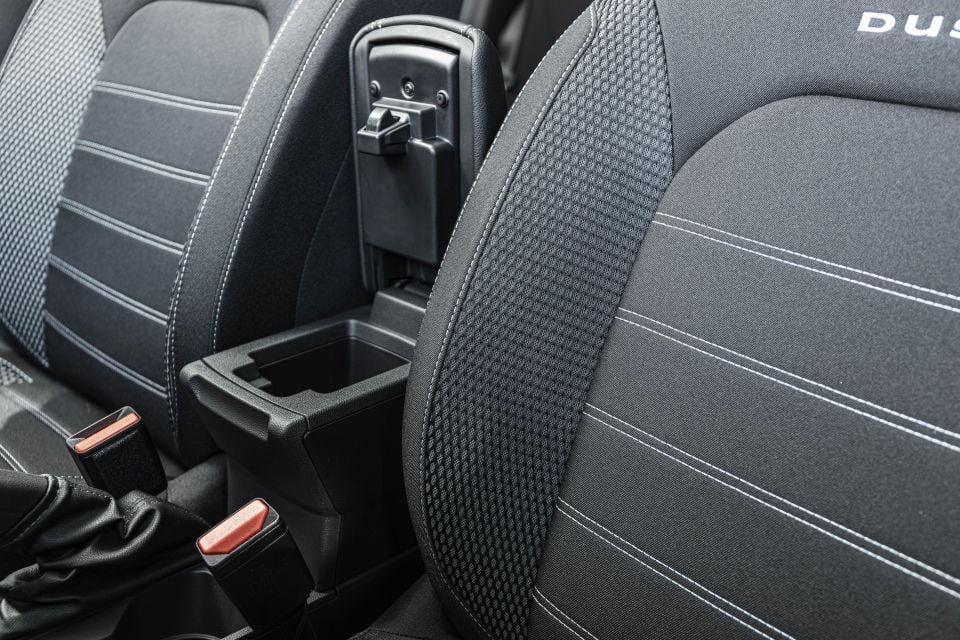
Buy your new car without the stress. It's fast, simple and completely free.

Great service from Travis and team, second time I have used this business would not hesitate to recommend them to anyone
Craig C.
Purchased a Ford Ranger in Sunshine Coast, QLD
CarExpert helped Craig save thousands on his Ford Ranger, now let us save you on your next new car.
Find a dealEven at that basic price the Duster is well equipped, assuming Australian cars follow European pricing and equipment structures.
The most basic Essential comes with LED headlights (new for the facelift) and LED brake lights (ditto), a rear spoiler, manual air conditioning, a DAB stereo with a USB port and Bluetooth, cruise control with a speed limiter, and black roof bars.
Step up to the mid-spec Comfort and you get a new 8.0-inch touchscreen infotainment system with Apple CarPlay and Android Auto connectivity. There’s also a reversing camera and parking sensors, auto wipers, a leather-wrapped steering wheel, 16-inch alloy wheels (which are more aerodynamically efficient), and front fog lights.
The top Prestige gets heated front seats, inbuilt navigation, wireless phone connectivity, climate control, a front-seat armrest with storage box, blind-spot monitoring, keyless entry, a surround-view system with four cameras and 17-inch alloys.
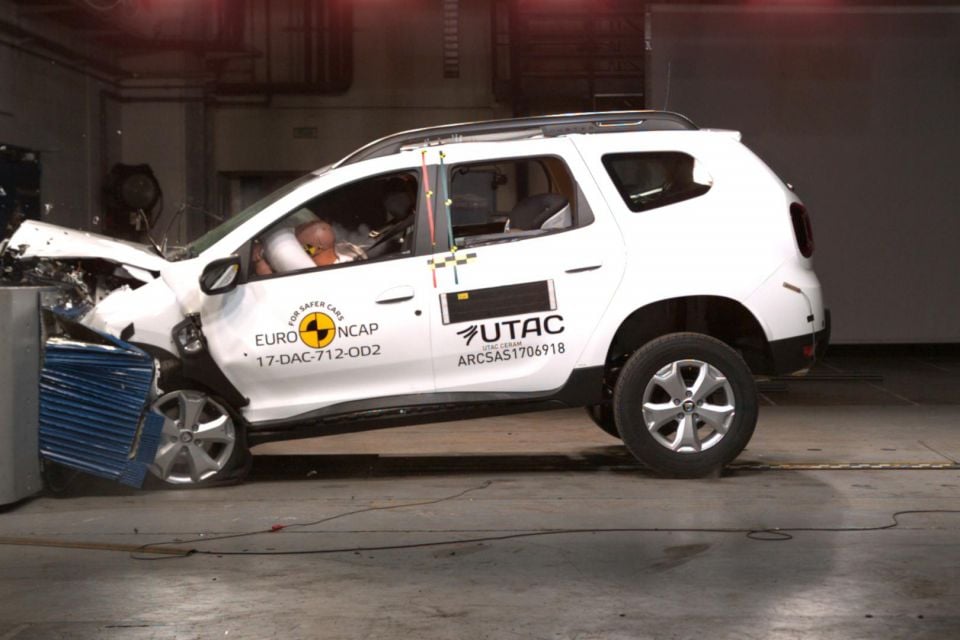
If you’re inside the car, the Duster does OK (but no more than OK). While not tested by ANCAP, the Duster currently wears a three-star Euro NCAP rating based on tests conducted in 2017.
It scored 71 per cent for adult occupant protection, 66 per cent for child occupant protection and 56 per cent for pedestrian protection. It got a low 37 per cent for safety assistance though, mostly due to a lack — even as an option — of systems such as autonomous emergency braking or lane-keep assist.
Standard safety kit for the Dacia Duster includes:
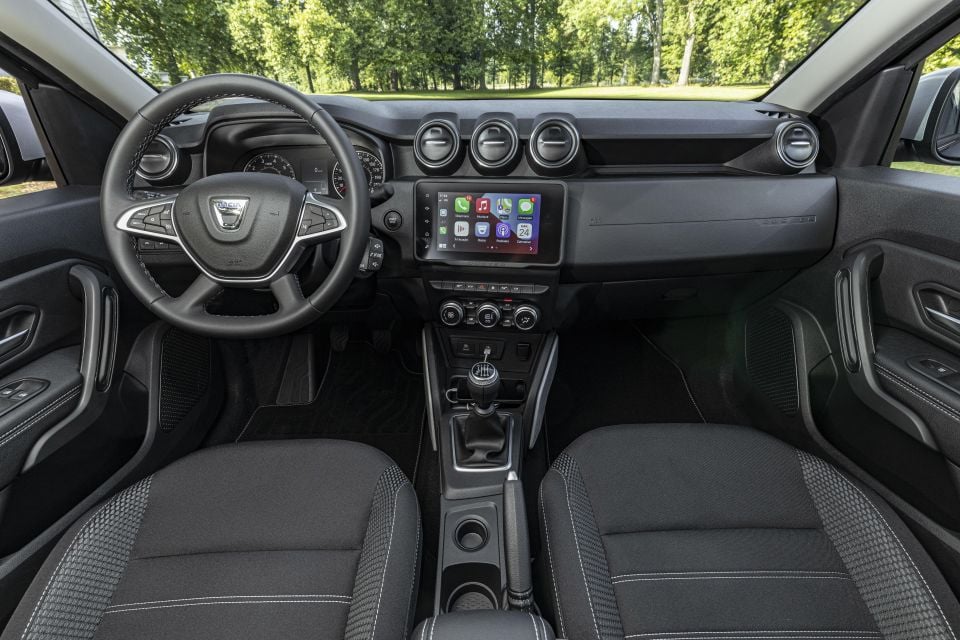
You get clear, legible analogue instruments with a basic but useful black-and-white digital screen in between them for the trip computer.
The column stalks come off a two-generation-old Renault Clio, as do the fingertip stereo controls, but they work just fine. All the plastics on show are cheap, but thankfully fall just on the right side of ‘and cheerful’, rather than ‘nasty’.
There’s good space up front, and the front seats have just been upgraded with new materials and sleeker headrests.
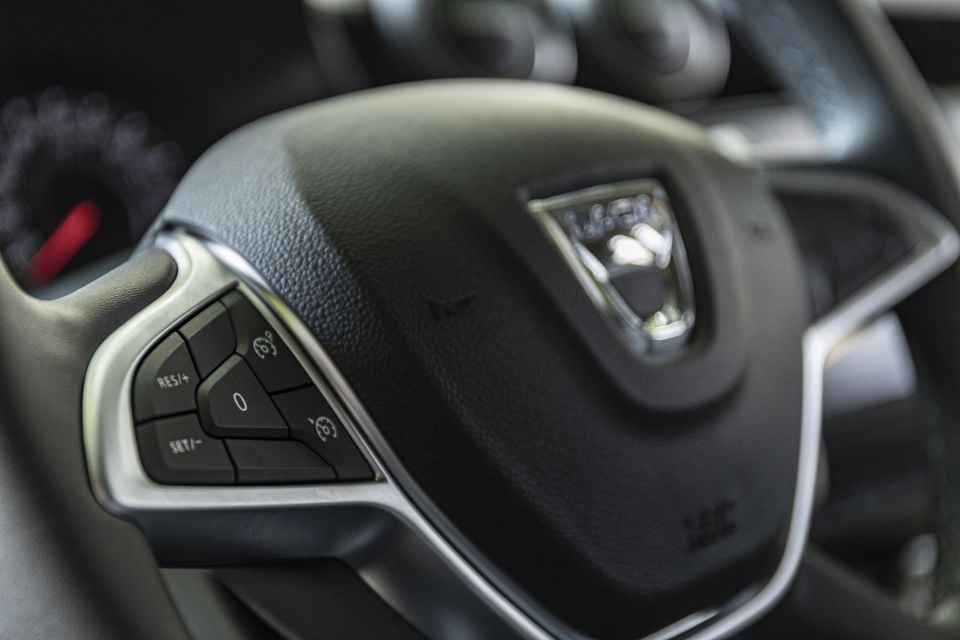
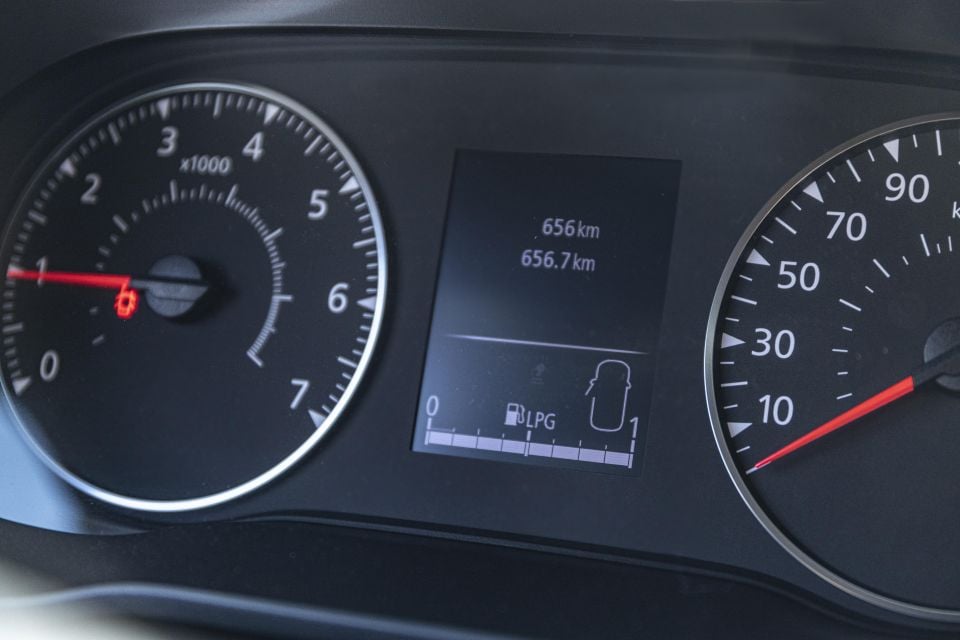
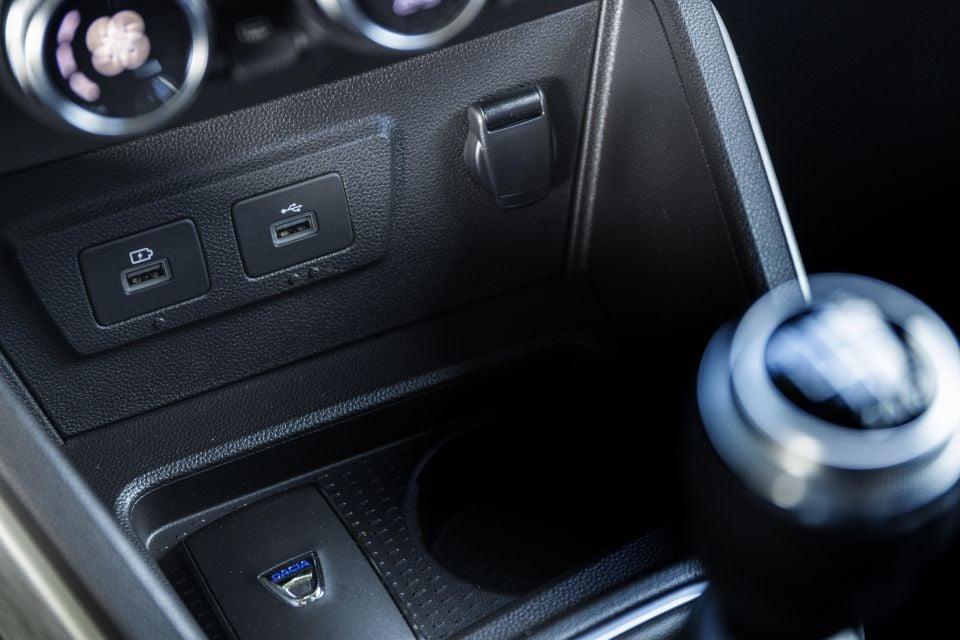
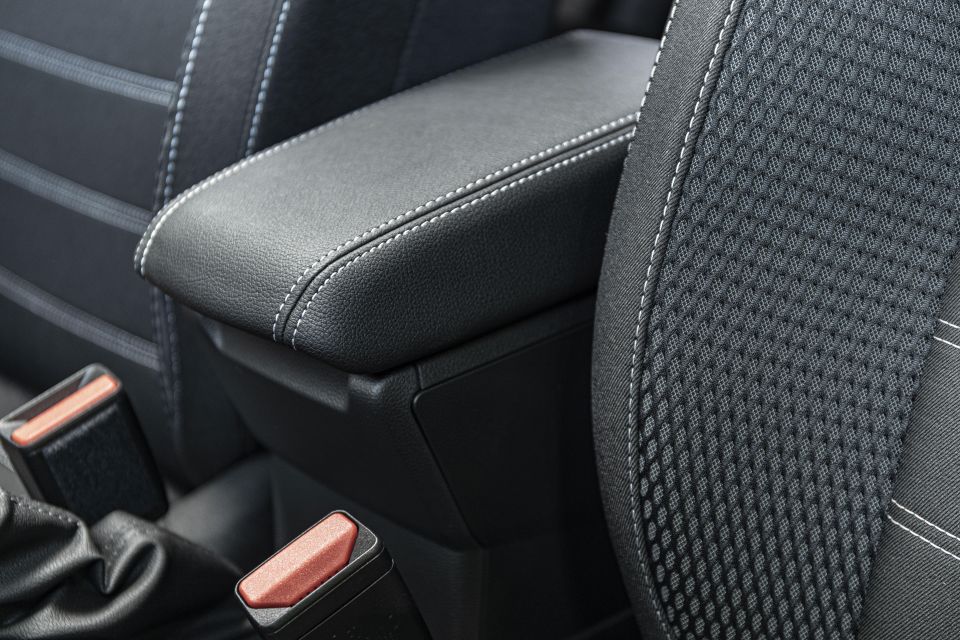
The four-spoke steering wheel also looks and feels good which, as it’s your main point of contact, lifts the general feel and ambience of the cabin.
In the back, there’s plenty of legroom, but headroom will be a touch tight if you’re very tall.
The boot space is excellent, though — 478 litres for front-wheel-drive models (you get a little less, 467 litres, if it’s a four-wheel-drive version).
The upgraded touchscreen is a good unit — there’s nothing special about it, but the menus are logically laid-out, and the phone connections work well.
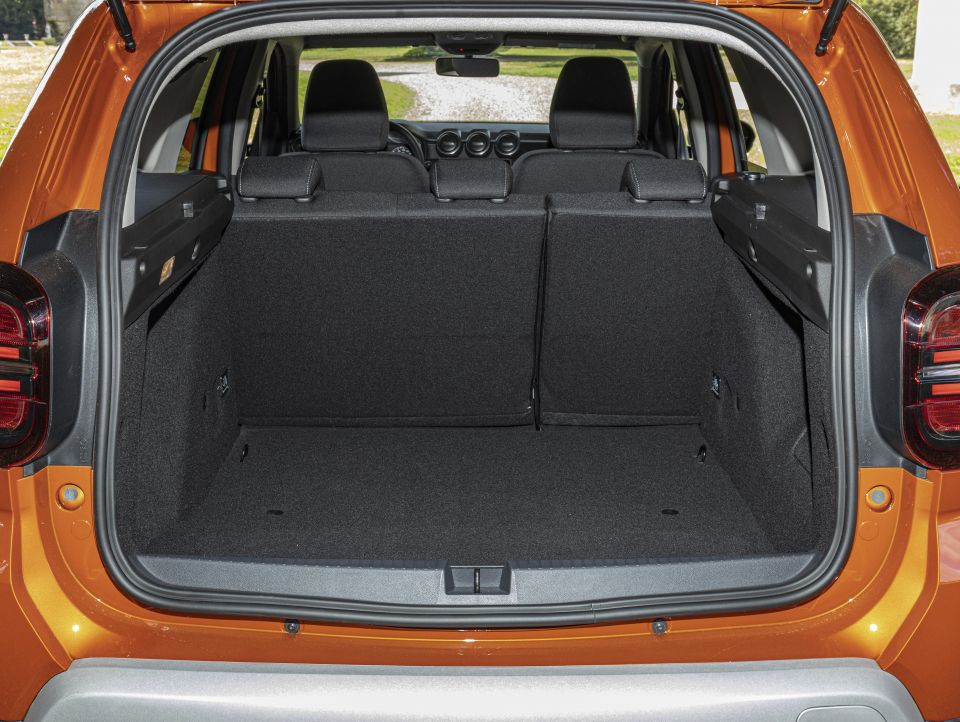

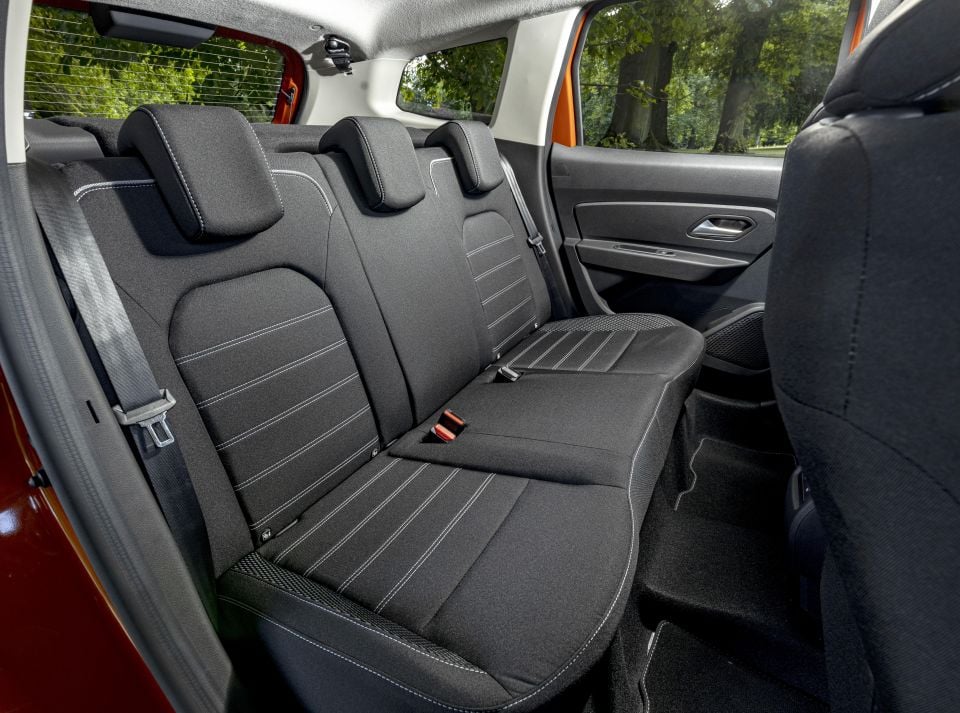
Upscale models get two USB-A slots in the front, and another optional two in the back, but basic models just get the one connection up front.
The navigation, if you spec it, looks a bit last-generation, but it works fine. Most of us will just plug in our phones and use Google Maps or Waze instead, of course.
Visibility all-round is fine, aside from a slight over-the-shoulder blockage from the chunky D-pillar, and the small third side glass.
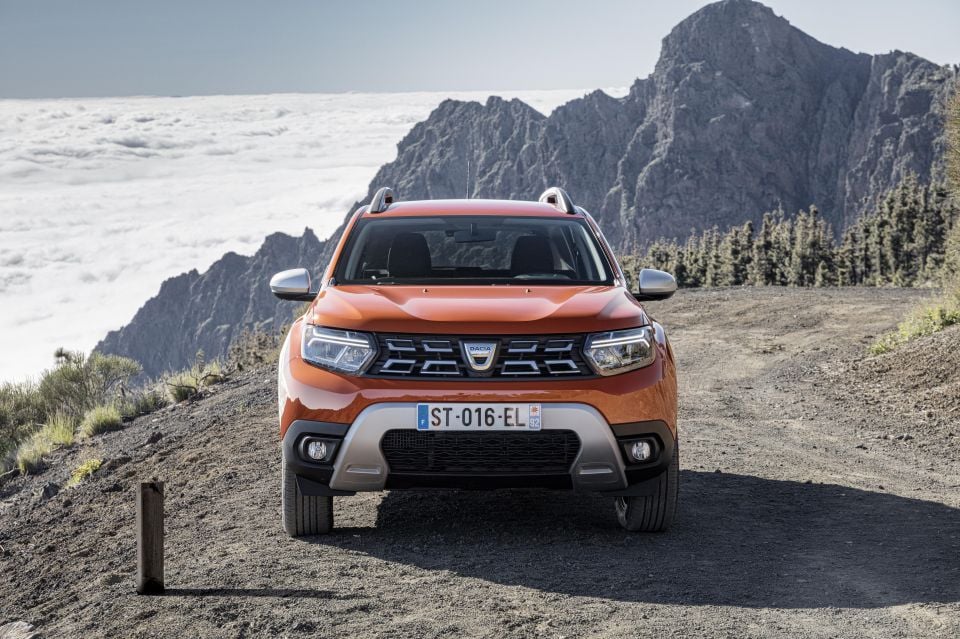
The Duster shares all of its power plants with the Renault line-up, so you get a choice of two turbocharged petrol engines — a 1.0-litre three-cylinder and a 1.3-litre four-pot, as well as a 1.5-litre four-cylinder diesel.
The four-cylinder turbo petrol develops 110kW/250Nm when mated to a six-speed EDC dual-clutch automatic (TCe 150 4×2). There’s also a 96kW/240Nm version of the same engine (TCe 130 4×2) that comes with a six-speed manual. That auto is new to the Duster line-up for this generation.
The base three-cylinder petrol comes either as a 67kW model or a 74kW model, but that’s not the whole story. You see, Dacia has gone big on LPG fuel for its cars — all Dacia models now come with at least one LPG option — and in the Duster, the LPG model also uses the 1.0-litre TCe three-cylinder engine.
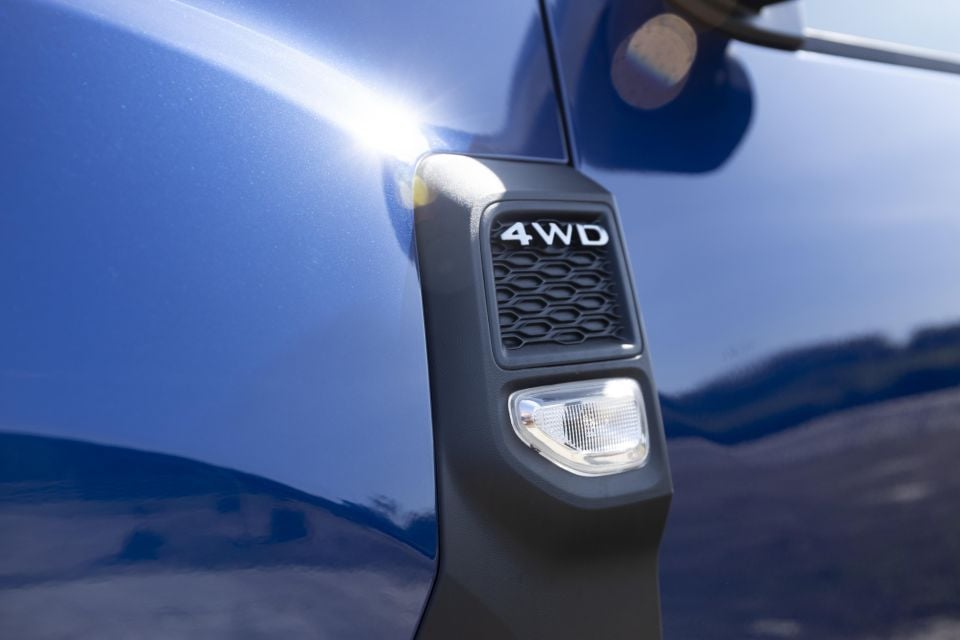
If you buy it badged as ‘Bi-Fuel’ it’s actually the same 67kW engine, or at least it is when you’re running it on petrol. Push the button to switch to LPG (from a 49L tank that fits in the spare wheel well) and power increases to 74kW, and torque goes up to 170Nm (from 160Nm).
Of course it also burns more, so fuel consumption goes from 6.4 litres per 100km running on petrol, to 6.9 litres per 100km running on LPG.
This might all be academic, as the market for LPG in Australia has dried up, although there are still some 3000 filling stations selling Autogas LPG.
Fill both tanks and you can go for as much as 1200km without a refill in the new Duster.
While the Duster is billed as something of a budget off-roader, the only engine variant offered with four-wheel drive is the 85kW/260Nm 1.5-litre dCi 115 turbo-diesel. It’s also manual only in this configuration.
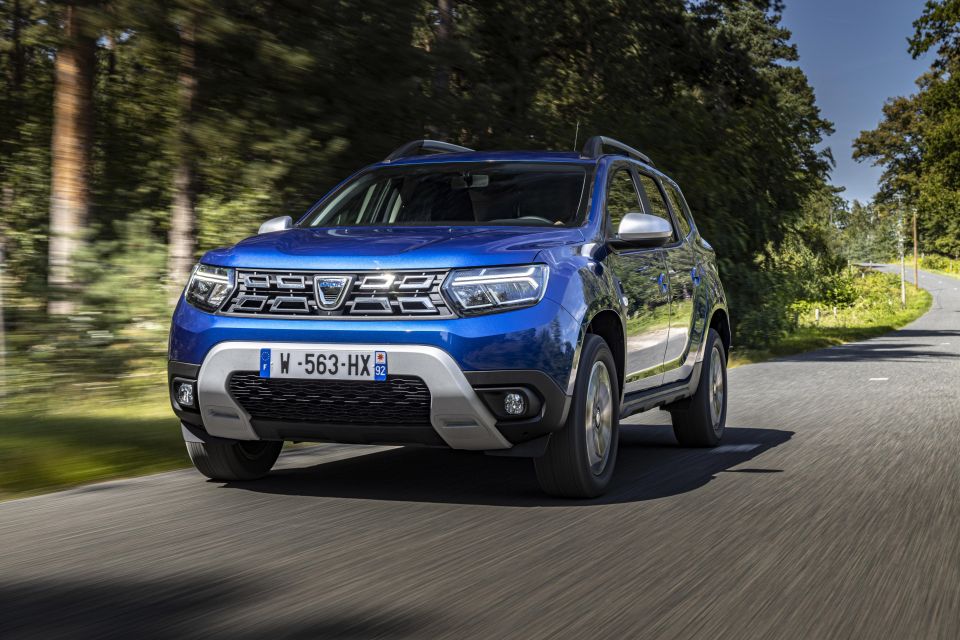
Set your expectations accordingly, and the Duster drives just fine.
Actually, with its long springs, relatively small alloys and high-profile tyres, what the Duster does best is ride well. It’s not overly soft, but poor surfaces just don’t upset it much, and it’s a relaxing car to drive.
Dacia’s engineers reckon they’ve improved the steering, with more weight and responsiveness this time around, but to be honest we couldn’t find much difference — it’s still very light and distant to steer, with no real feedback.
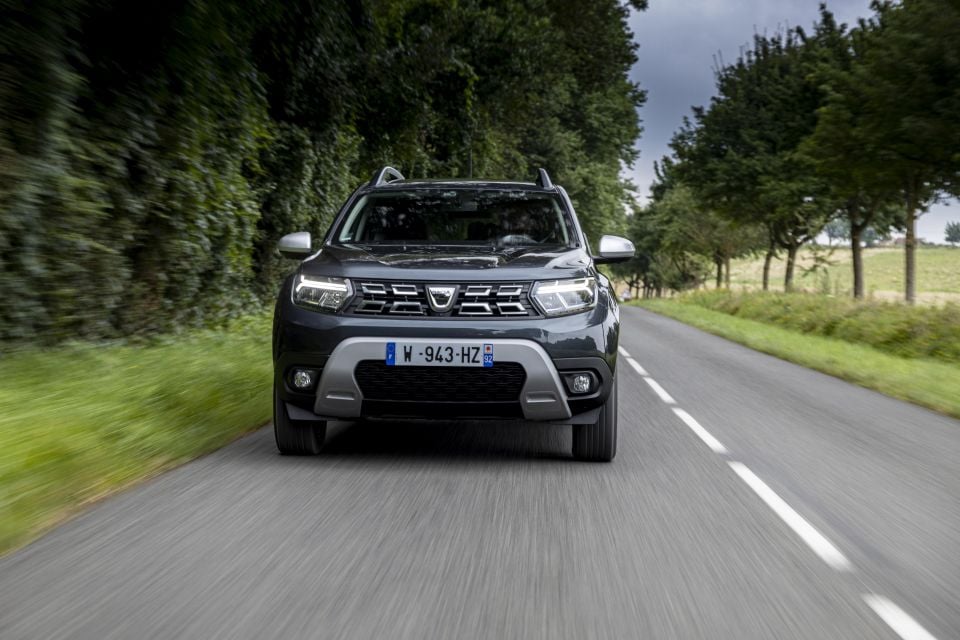
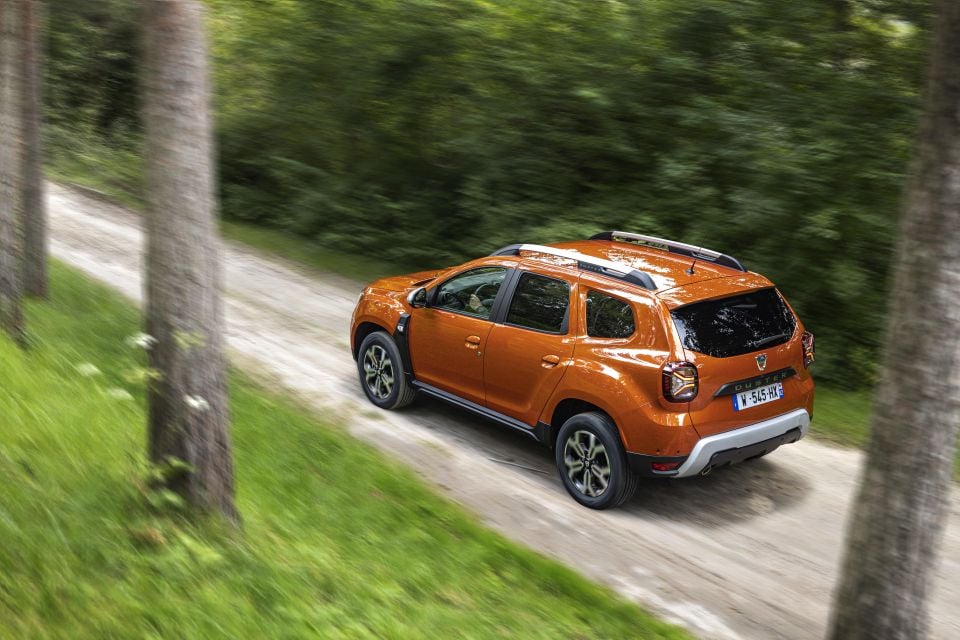
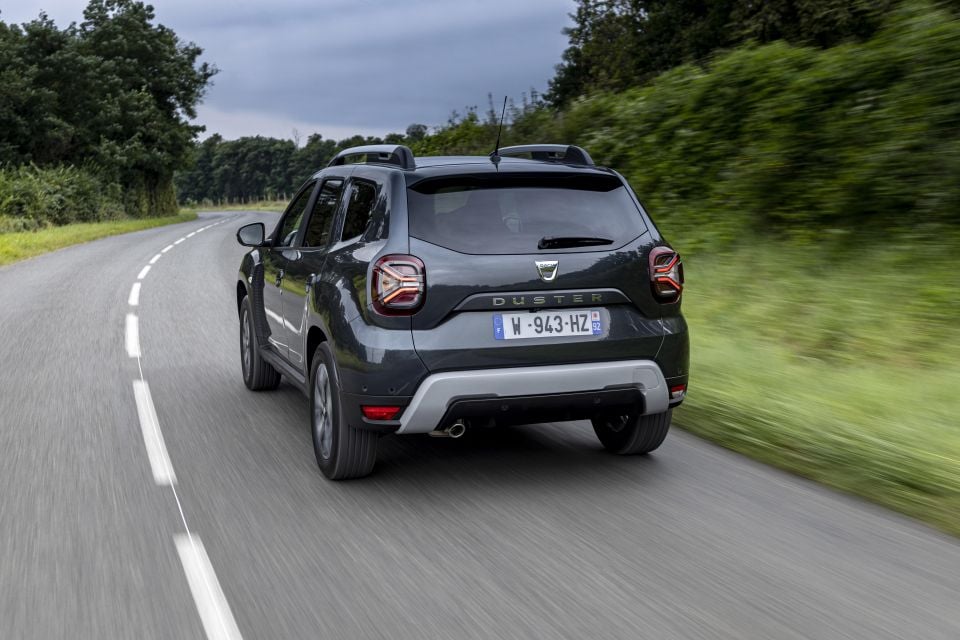
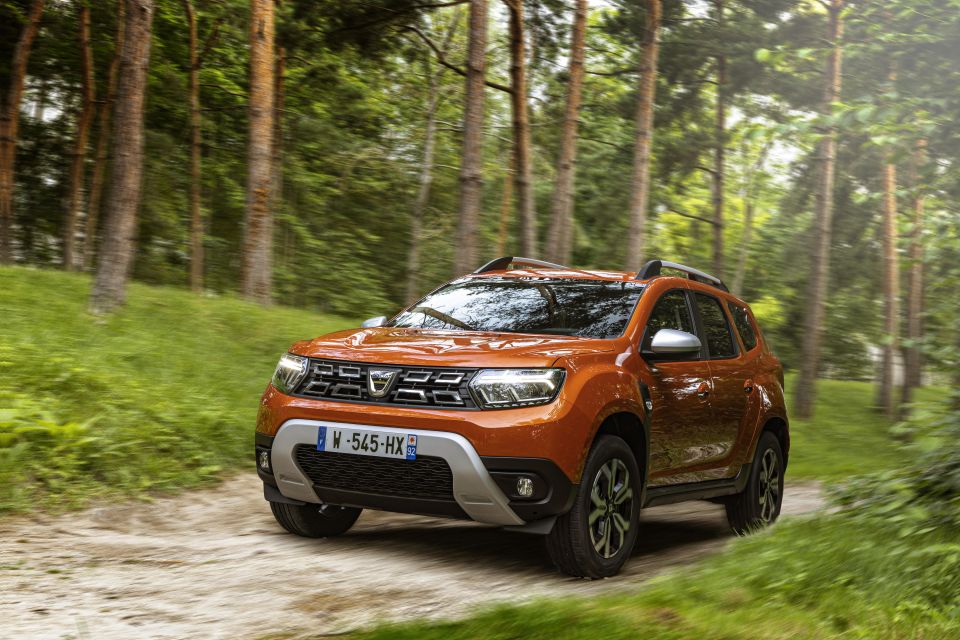
That’s okay though, because it’s accurate enough, and once you let the Duster settle into its pretty generous body roll angle in a fast corner, it grips and hangs on well enough. As with most things about the Duster, it’s absolutely fine, and nothing more.
That goes for the engines, too. The basic 1.0L — whether you’re running on petrol or LPG — gets around fine, but it has a pretty sluggish 15.1-second 0-100km/h time (when running on petrol) so don’t go expecting sparkling performance.
The 110kW 1.3-litre engine is livelier, but the EDC auto lets it rev a bit too high and harshly, which spoils the refinement a bit and makes you want to not bother accelerating. Slower though it is, the 1.0L engine is actually better suited to the Duster’s easy-going character.
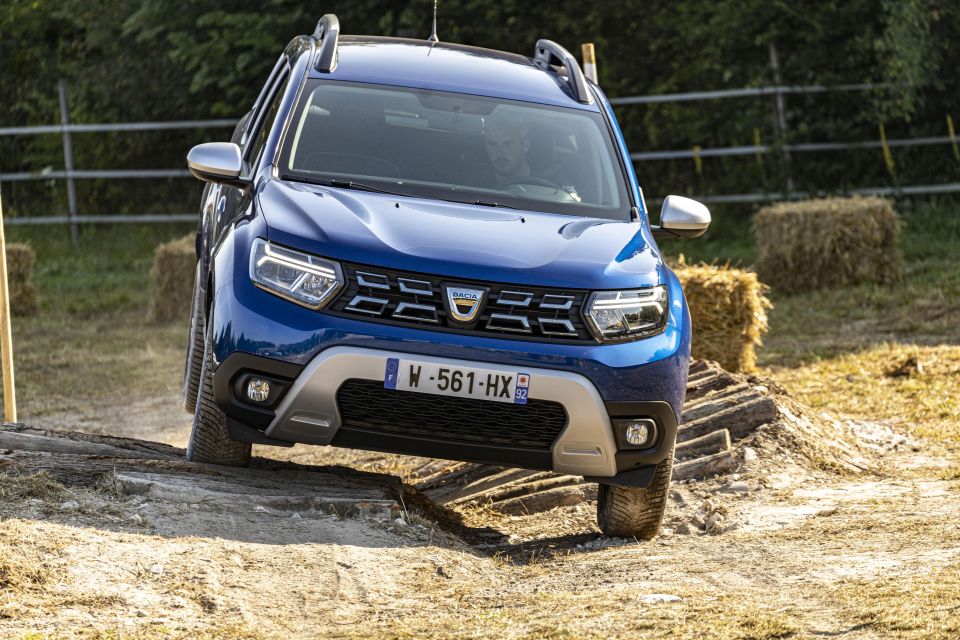
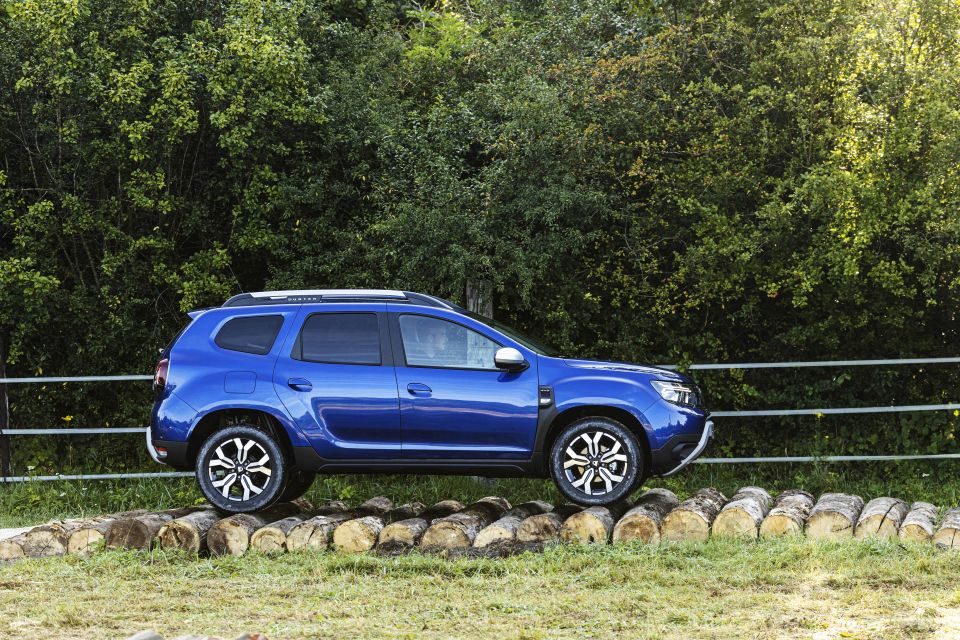
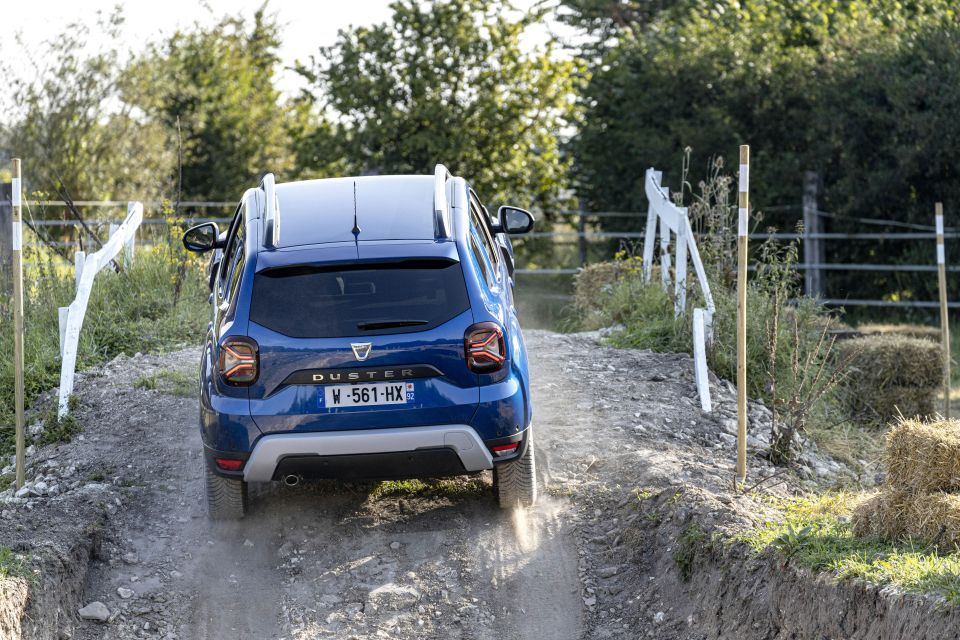
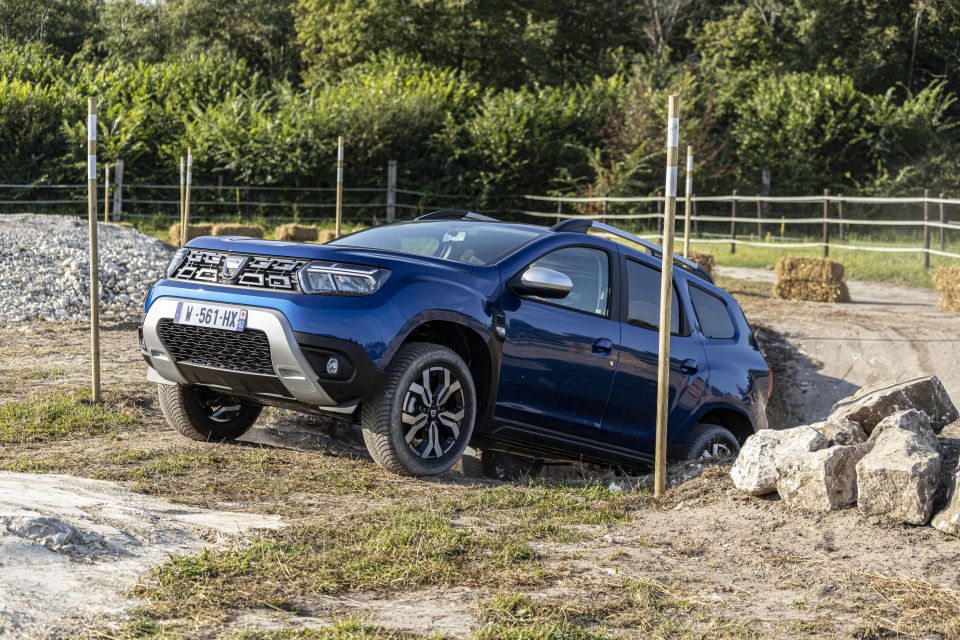
If you go for a 4WD version, it’s pretty decent in the rough too. It has 30-degree and 34-degree approach and departure angles, and 214mm of ground clearance.
Dacia let us put it through a pretty tame off-road course, but even so it acquitted itself well, coping easily with a 30-degree side-slope, and scrambling easily over from axle-tilt tests.
It may not get you too far into the outback, but it’ll cope fine with unmade roads and the odd rocky climb.
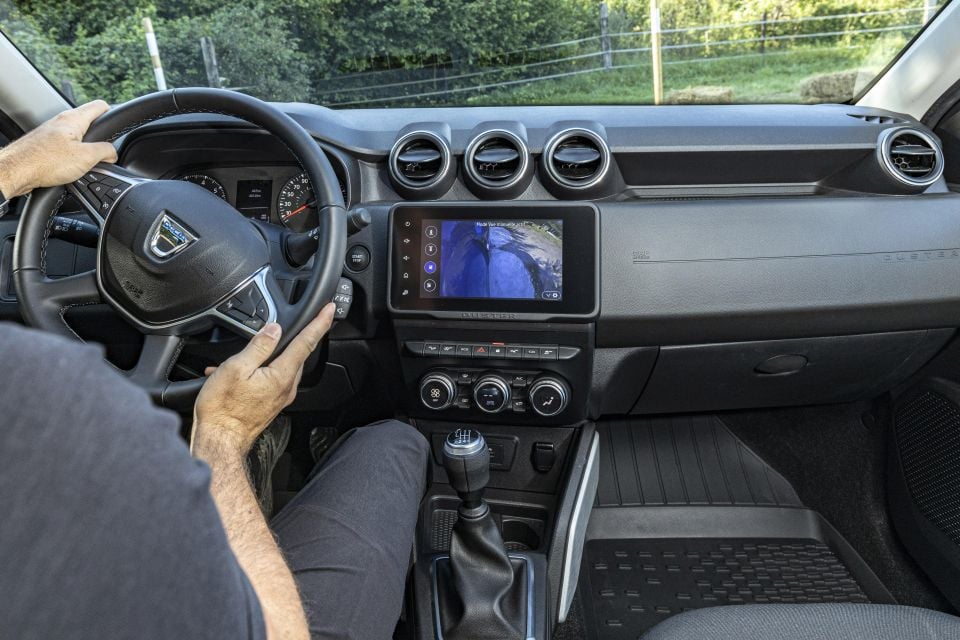
Much of this will depend on whether or not we get the LPG model.
The 1.0-litre TCe engine’s overall fuel consumption — 6.4 litres per 100km — isn’t anything to get excited about, but if the LPG model is available the potential to make fuel savings, with LPG costing 75c per litre or thereabouts, is obvious.
Of course, there’s great money-saving potential in the Duster’s price.
Dacia’s residual values have proved solid in the northern hemisphere too, and while the basic warranty is a three-year one, you can optionally extend that out to six years and 160,000km for a pretty reasonable price.
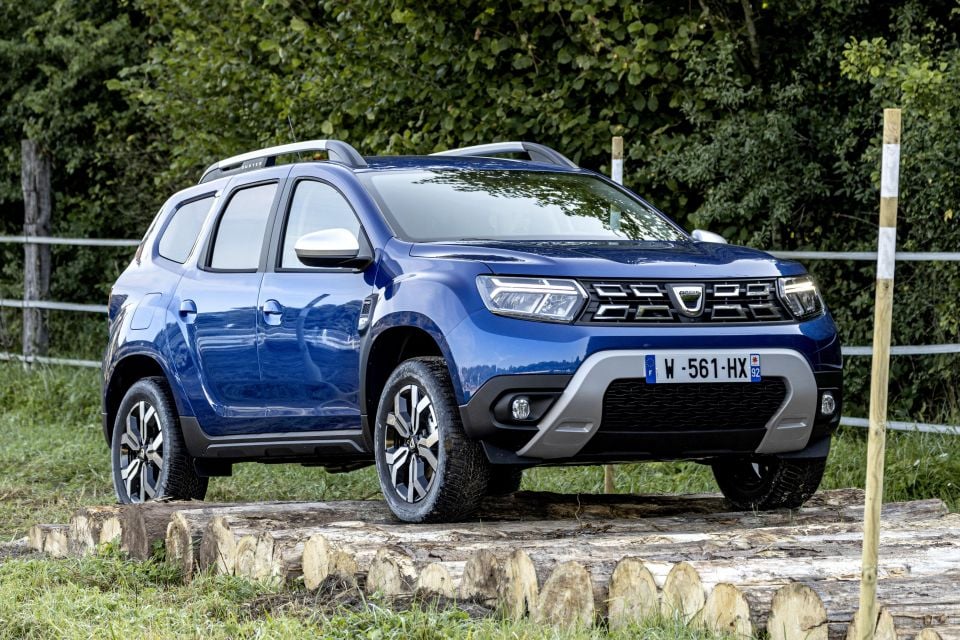
Where expert car reviews meet expert car buying – CarExpert gives you trusted advice, personalised service and real savings on your next new car.
OK, so the safety rating isn’t great and it’s no hot hatch to drive. Even so, we feel the Duster is, within its own terms, an impressive car.
It’s a simple soul — not designed to be impressive, nor exciting, but just to function, and to function well. It does that, and manages to show a bit of personality doing it.
If the Dacia brand does finally come to Australia, then we can easily see a lot of potential happy customers for this refreshingly simple, straightforward car.
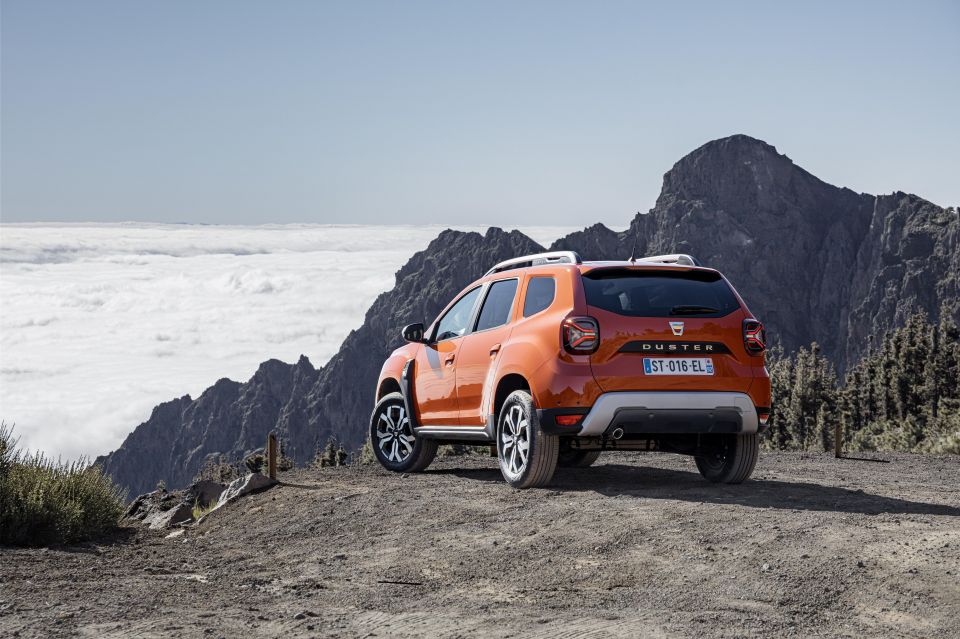
Click the images for the full gallery
MORE: Everything Dacia Duster
Where expert car reviews meet expert car buying – CarExpert gives you trusted advice, personalised service and real savings on your next new car.


Matt Campbell
2 Hours Ago


Ben Zachariah
18 Hours Ago


Damion Smy
19 Hours Ago
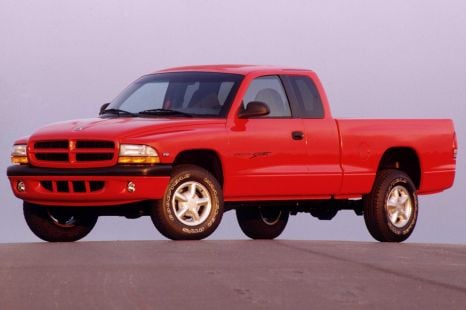

Derek Fung
19 Hours Ago


Ben Zachariah
20 Hours Ago
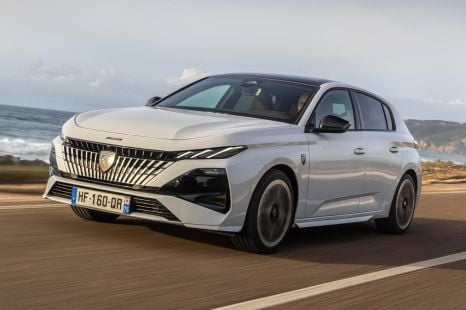

Matt Robinson
1 Day Ago